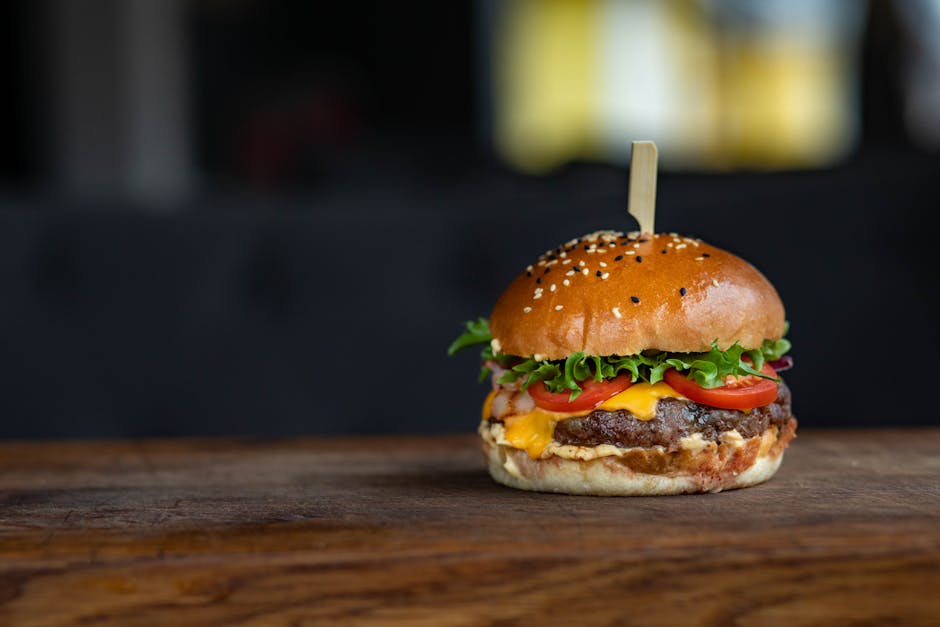Chickpea salad, a staple in many cuisines, boasts a surprisingly rich history, though its exact origins remain somewhat elusive. While variations exist across cultures, the core concept – a creamy, flavorful mixture built around chickpeas – has appeared independently in various regions. Its modern iteration, often associated with American cuisine, typically features mayonnaise, celery, and onion, sometimes with additions like grapes or apples. However, the vegan adaptation we’ll explore today offers a delicious and accessible alternative for those following a plant-based lifestyle, mirroring the growing global interest in vegetarian and vegan diets.
The rise of veganism has significantly impacted food trends, with the number of vegans globally estimated to be over 79 million in 2023, a figure projected to continue growing exponentially. This surge has fueled innovation in plant-based cooking, leading to the widespread popularity of vegan alternatives to classic dishes. Vegan chickpea salad is a prime example of this culinary evolution, providing a healthy and cruelty-free option that rivals its traditional counterpart in both taste and texture. It’s a testament to the creativity and resourcefulness of vegan chefs who constantly seek to reinvent and improve upon established recipes.
Culturally, chickpeas themselves hold immense significance. These humble legumes are a cornerstone of Mediterranean and Middle Eastern diets, featuring prominently in dishes ranging from hummus to falafel. Their nutritional profile – packed with protein, fiber, and essential minerals – has made them a dietary staple for centuries. The adaptation of chickpea salad into a vegan format reflects a broader global shift towards mindful eating and sustainability. By replacing traditional ingredients like eggs and dairy with plant-based alternatives, we honor the rich history of the chickpea while embracing modern dietary preferences and ethical considerations. This recipe celebrates both tradition and innovation, showcasing the versatility and deliciousness of plant-based cooking.
Ingredients and Measurements
This recipe yields approximately 4 servings of delicious vegan chickpea salad. Accurate measurements are crucial for achieving the perfect consistency and flavor. Using a kitchen scale is highly recommended for the most precise results, especially when measuring the chickpeas and mayonnaise.
Chickpeas: 1 (15-ounce) can chickpeas, rinsed and drained thoroughly. It’s vital to rinse the chickpeas well to remove any excess canning liquid, which can make the salad watery. If using dried chickpeas, you’ll need approximately 1 cup, cooked until tender. Remember to adjust the liquid in the recipe accordingly if using homemade chickpeas.
Vegan Mayonnaise: 1/2 cup vegan mayonnaise. The type of mayonnaise you choose can affect the flavor and texture of your salad. Experiment with different brands to find your favorite. Consider using a high-quality, flavorful vegan mayo for the best results. If you prefer a lighter salad, you can reduce the amount to 1/4 cup.
Celery: 1/2 cup finely chopped celery. Use fresh celery for the best flavor and crunch. Avoid using celery that is limp or wilted. If you don’t have fresh celery, you can substitute with 2 tablespoons of finely chopped celery flakes, but the texture will differ.
Red Onion: 1/4 cup finely chopped red onion. Red onion adds a nice bite and color. If you prefer a milder flavor, you can use white onion instead, or simply reduce the amount. Soaking the chopped onion in cold water for 10 minutes before adding it to the salad can help mellow its sharpness.
Lemon Juice: 2 tablespoons fresh lemon juice. Freshly squeezed lemon juice provides the best flavor. Avoid using bottled lemon juice, as it often contains preservatives that can affect the taste. If you don’t have lemons, you can substitute with 1 tablespoon of white wine vinegar.
Mustard: 1 tablespoon Dijon mustard. Dijon mustard adds a tangy flavor and helps to bind the ingredients together. You can experiment with other types of mustard, such as yellow mustard or whole grain mustard, but the flavor profile will change.
Seasoning: 1/2 teaspoon salt, 1/4 teaspoon black pepper. Adjust the seasoning to your taste. You may want to add more salt or pepper depending on your preference and the saltiness of your vegan mayonnaise.
Optional additions: Consider adding other ingredients such as chopped pickles, dill, parsley, or curry powder for extra flavor and texture. Remember to adjust the quantities of other ingredients accordingly if adding extra components.
Preparation of Chickpeas (Soaking, Boiling or Canned)
Choosing the right chickpeas is crucial for a delicious vegan chickpea salad. You have three main options: using canned chickpeas, boiling dried chickpeas, or a combination of both. Each method has its pros and cons, impacting both the texture and flavor of your final dish.
Using Canned Chickpeas: This is the quickest and easiest method. Simply drain and rinse one (15-ounce) can of chickpeas thoroughly under cold water. Make sure to remove any skins that may have come loose; these can sometimes have a slightly bitter taste. This method is ideal for a quick weeknight meal. However, canned chickpeas can sometimes be slightly softer in texture compared to those cooked from dry.
Boiling Dried Chickpeas: This method offers a superior texture and arguably a richer flavor. Start with 1 cup of dried chickpeas. Before cooking, it’s essential to soak them overnight. Place the chickpeas in a large bowl, cover them with at least 4 cups of cold water, and let them soak for at least 8 hours, or preferably overnight. This soaking process significantly reduces cooking time and improves digestibility. After soaking, drain the chickpeas and rinse them again.
Next, place the soaked chickpeas in a large pot, cover them with about 6 cups of fresh water, and bring to a boil. Once boiling, reduce the heat to low, cover the pot, and simmer for 60-90 minutes, or until the chickpeas are tender but not mushy. Check for doneness by easily piercing a chickpea with a fork. If they’re still firm, continue simmering for another 15-20 minutes. Once cooked, drain the chickpeas thoroughly.
Combining Methods: For optimal results, you can combine both methods. Use a can of chickpeas for convenience and supplement with a portion of home-cooked chickpeas for a creamier texture and deeper flavour. For example, you could use half a can (7.5 ounces) of chickpeas combined with ½ cup of cooked dried chickpeas. This approach balances speed and quality.
Important Note: Regardless of the method you choose, always rinse your chickpeas thoroughly before using them in your vegan chickpea salad. This removes excess starch and prevents a gummy texture. Properly prepared chickpeas are the foundation for a fantastic vegan chickpea salad!
Vegetable Preparation (Chopping, Slicing, etc.)
Proper vegetable preparation is key to a delicious and texturally appealing vegan chickpea salad. We’ll be using celery, red onion, and bell pepper, but feel free to add your favorites like carrots, cucumber, or jalapeños.
Begin with the celery. We’ll need approximately 2 stalks, about 1 cup chopped. First, thoroughly wash the celery stalks under cold running water. Then, trim off the leafy tops and any stringy ends. Using a sharp chef’s knife, slice the celery stalks lengthwise into thin strips. Next, finely chop the strips into approximately 1/4-inch pieces. Consistency is important here; uneven chopping will lead to an uneven texture in the final salad.
Next, prepare the red onion. A half of a medium-sized red onion (about 1/2 cup chopped) provides a nice bite without being overpowering. Peel the onion by removing the outer layers. Then, slice the onion in half from pole to pole. Lay the halves flat and make thin slices across the onion, working your way from one side to the other. Finally, finely chop these slices into small, roughly 1/8-inch pieces. If you find red onion too pungent, briefly soaking the chopped onion in cold water for 5-10 minutes will help mitigate its sharpness.
Finally, prepare the bell pepper. One medium bell pepper (any color you prefer, about 1 cup chopped) adds sweetness and color. Wash the pepper thoroughly and remove the stem, seeds, and membranes. Cut the pepper in half lengthwise. Then, slice the pepper into thin strips and finally chop into small, roughly 1/4-inch pieces, similar in size to the celery. Ensure you remove all the seeds and membranes to avoid a bitter taste.
Once all your vegetables are chopped, place them in a medium-sized bowl. Avoid over-chopping the vegetables; aim for a pleasant mix of textures rather than a completely pureed consistency. You’re now ready to combine these with your chickpeas and other ingredients to create your delicious vegan chickpea salad!
Mixing the Salad (Combining Ingredients)
Once all your ingredients are prepped, it’s time to bring your vegan chickpea salad to life! The key to a delicious salad is gentle, thorough mixing to ensure even distribution of flavors and textures. We’ll be combining the chickpeas, vegetables, and dressing in a large bowl. Avoid over-mixing, as this can lead to mushy chickpeas and a less appealing texture.
Begin by adding your cooked chickpeas (approximately 2 cups, drained and rinsed) to a large mixing bowl. Ensure the chickpeas are completely drained to prevent a watery salad. If you’re using canned chickpeas, a quick rinse under cold water will help remove any excess starch or sodium.
Next, add your finely chopped celery (about 1/2 cup) and red onion (1/4 cup, finely diced). The finer you chop these vegetables, the more evenly they’ll distribute throughout the salad. Larger pieces of celery or onion can create textural inconsistencies.
Now, incorporate the chopped fresh parsley (2 tablespoons, finely chopped) and dill (1 tablespoon, finely chopped). These fresh herbs add a vibrant flavor and aroma that elevates the salad. Don’t be shy with the herbs! Their fresh taste is a wonderful complement to the chickpeas and other ingredients.
Finally, add your prepared vegan mayonnaise (1/4 cup), lemon juice (1 tablespoon), Dijon mustard (1 teaspoon), and salt and pepper to taste. Start with a smaller amount of dressing and gradually add more until you achieve your desired consistency. Some prefer a drier salad, while others prefer a creamier texture. Taste as you go and adjust the seasoning accordingly.
Using a large spoon or spatula, gently fold all the ingredients together. Avoid vigorous stirring, which can break down the chickpeas. A gentle folding motion ensures the dressing coats each chickpea and vegetable evenly without damaging them. Once everything is well combined, give it a final taste test and adjust the seasoning as needed. Your delicious vegan chickpea salad is now ready to enjoy!
Pro Tip: For an even more flavorful salad, consider adding a pinch of garlic powder or onion powder along with the salt and pepper. A dash of celery seed can also enhance the savory notes.
Flavor Enhancements (Seasoning, Spices, Sauces)
The magic of a truly delicious vegan chickpea salad lies in its flavor profile. While the chickpeas themselves provide a wonderful base, it’s the careful selection and combination of seasonings, spices, and sauces that elevate it from good to exceptional. Don’t be afraid to experiment and find your perfect balance!
Salt and Pepper: These are fundamental. Start with 1/2 teaspoon of salt and 1/4 teaspoon of freshly ground black pepper per cup of mashed chickpeas. Taste and adjust as needed. Sea salt offers a more complex flavor than table salt. Consider adding a pinch of celery salt for an extra savory kick.
Spices: A little goes a long way. Experiment with spices like 1/4 teaspoon of smoked paprika for a smoky depth, 1/8 teaspoon of cayenne pepper for a subtle heat (or more, to taste!), or 1/4 teaspoon of garlic powder and onion powder for a classic savory base. Turmeric (1/8 teaspoon) adds a vibrant color and a slightly earthy flavor. Remember to adjust spice levels to your preference.
Acidic Elements: Acidity is crucial for balancing the richness of the chickpeas and enhancing the overall flavor. A squeeze of lemon juice (1-2 tablespoons) or a splash of apple cider vinegar (1 tablespoon) brightens the salad beautifully. Avoid using too much acid, as it can make the salad taste overly tart.
Sauces: This is where you can really personalize your chickpea salad. Vegan mayonnaise (2-4 tablespoons) provides creaminess and richness. For a lighter option, consider using a plant-based yogurt (2-4 tablespoons). If you want a tangier flavor, you can add a tablespoon or two of Dijon mustard. Experiment with different combinations of sauces to find your preferred texture and taste. For example, a combination of vegan mayo and Dijon mustard offers a creamy, tangy punch.
Fresh Herbs: Adding fresh herbs elevates the flavor and adds visual appeal. Chopped fresh parsley (2 tablespoons), dill (1 tablespoon), or chives (1 tablespoon) work wonderfully. Remember to add these towards the end to maintain their vibrant color and fresh flavor.
Other Flavor Enhancers: Consider adding a teaspoon of prepared horseradish for a zesty kick, or a few dashes of Worcestershire sauce (ensure it’s vegan-friendly) for a complex umami flavor. A pinch of sugar or maple syrup can also help balance the acidity and add a touch of sweetness. Start with small amounts and adjust to your taste.
Professional Recommendation: Taste your chickpea salad at each step of the seasoning process. This allows you to adjust the flavors as you go and achieve your desired taste profile. Don’t be afraid to experiment and have fun with it! The best chickpea salad is the one you enjoy the most.
Serving Suggestions (Bread, Crackers, Lettuce Wraps)
Your delicious vegan chickpea salad is incredibly versatile and can be enjoyed in a variety of ways. Here are some of our favorite serving suggestions, offering options to suit different tastes and dietary needs.
Bread: For a classic sandwich experience, consider using crusty artisan bread, sourdough, or even a soft whole wheat roll. Aim for slices around 1/4 inch thick to ensure a satisfying bite without overwhelming the delicate flavors of the chickpea salad. For a heartier sandwich, use two slices of bread per serving. If you prefer a lighter option, try using only one slice of bread as a base or open-faced sandwich. Experiment with different types of bread to find your perfect match. Approximately 2-4 slices of bread per serving is recommended, depending on your preference.
Crackers: Crackers provide a delightful crunch that complements the creamy texture of the chickpea salad. We recommend using crispbread crackers, multigrain crackers, or even water crackers for a neutral flavor profile that allows the chickpea salad to shine. Consider serving 4-6 crackers per serving, depending on the size of the crackers. For a more substantial snack, you can also top the crackers with a sprinkle of chopped fresh herbs or a drizzle of olive oil for added flavor.
Lettuce Wraps: For a lighter, low-carb option, lettuce cups offer a refreshing and healthy alternative to bread or crackers. Large leaves of romaine lettuce, butter lettuce, or crisphead lettuce work best. Simply wash and thoroughly dry the lettuce leaves before carefully spooning the chickpea salad into the center of each leaf. Aim for 2-3 large lettuce leaves per serving. This option is particularly appealing for those watching their carbohydrate intake or seeking a more visually appealing presentation. You can add a sprinkle of toasted sunflower seeds or chopped nuts for added texture and visual appeal.
Professional Recommendation: No matter which serving method you choose, ensure that the chickpea salad is properly chilled before serving for optimal flavor and texture. If using bread, toast it lightly to enhance its crispness and prevent sogginess. For crackers, avoid overly salty varieties that might overpower the subtle flavors of the chickpea salad. With lettuce wraps, ensure the lettuce leaves are completely dry to prevent the salad from becoming watery.
Recommendations
This vegan chickpea salad recipe is incredibly versatile and can be enjoyed in numerous ways. For a light and refreshing lunch, serve it on whole-wheat bread or crackers. Consider using multigrain bread or gluten-free crackers for added nutritional benefits. You can also stuff it into lettuce cups for a low-carb option, or use it as a filling for bell peppers or avocado halves for a vibrant presentation.
To enhance the flavor profile, consider adding a squeeze of lemon juice just before serving for a brighter taste. A sprinkle of fresh herbs like dill, parsley, or chives adds a lovely aromatic touch. Experiment with different spices to personalize your salad; a dash of curry powder or smoked paprika can significantly alter the flavor profile. For extra texture, toasted sunflower seeds or chopped walnuts provide a satisfying crunch.
Regarding storage, it’s best to store leftover chickpea salad in an airtight container in the refrigerator. It will generally keep for 3-4 days. Remember to bring it to room temperature before enjoying it again. Do not leave it at room temperature for extended periods, especially in warm weather, to avoid bacterial growth.
This chickpea salad pairs perfectly with a variety of dishes. Serve it alongside a fresh green salad with a light vinaigrette for a complete and balanced meal. It also complements roasted vegetables like sweet potatoes or broccoli, adding protein and flavor to a side dish. For a heartier meal, consider serving it with a side of quinoa or brown rice for added carbohydrates and fiber.
Nutritional Information (per serving, approximate): Calories: Approximately 250-300 (depending on ingredients and portion size), Protein: 10-15g, Fiber: 8-10g. Note: This is an estimate and may vary based on the specific ingredients used and portion size. For precise nutritional information, use a nutrition calculator with your specific ingredient list and quantities.





